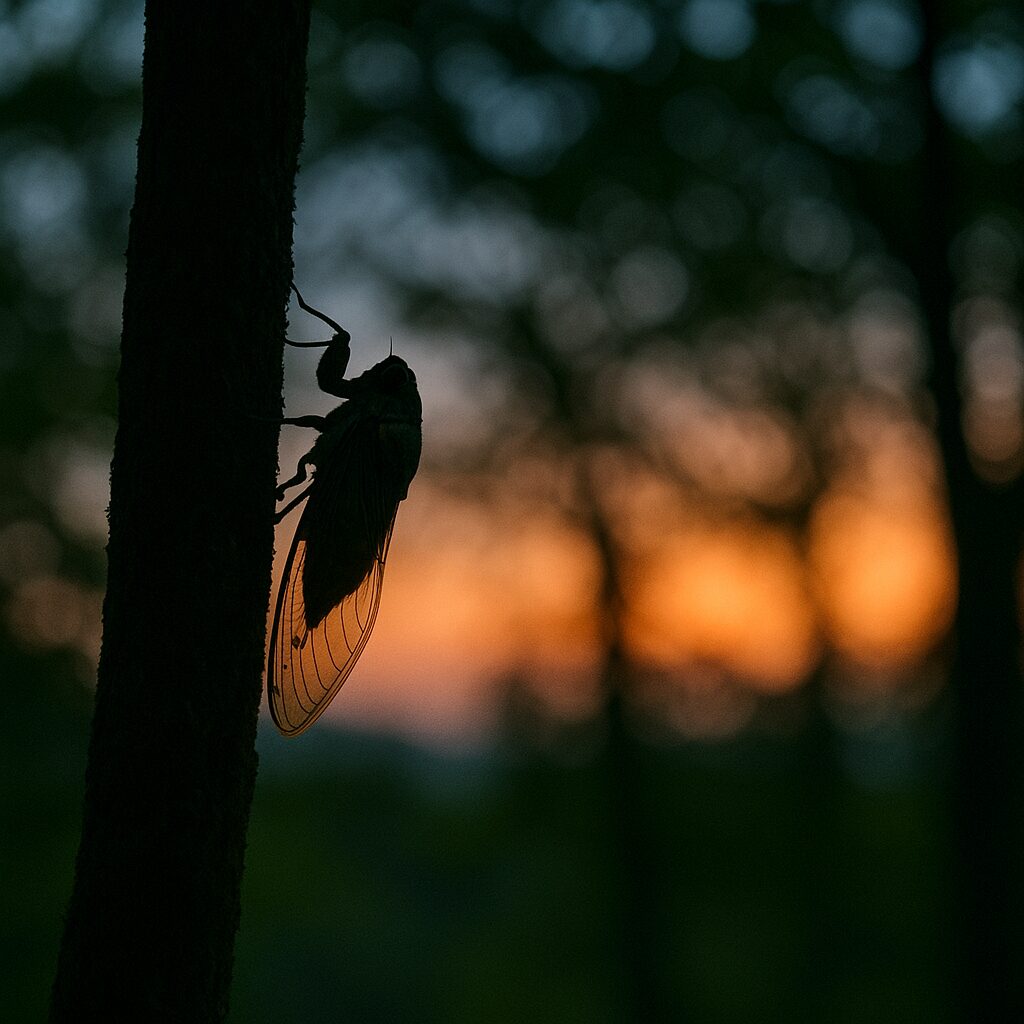At dusk, the evening cicada sounds from the grove across the lane, and indoors edges clarify as quiet takes hold.
From cedar and cypress across the lane, a dry, bell-like call is heard, and inside the old house along the lane the boundary holds at the screen.
Higurashi, Tanna japonensis, is an evening-and-dawn cicada heard in late-summer twilight across much of Japan. The call is thin and briefly overlapping, most often carried from wooded edges of cedar, cypress, and evergreen oak, from damp strips along streams, and from tall trees in old gardens and shrine precincts.
In cities it is rarer, and in open parks it keeps to deeper foliage. Calling peaks when light is low, and the insect usually holds high on trunks or on the shaded side of leaves.
Where the first line is heard
Across the lane, where the last light knots in leaves, a single line is heard slightly above eye level. It does not show itself, and it holds among trees. The nearest trunk often stays quiet. Cedar sill grain remains legible, and the bamboo fence keeps a narrow strip of dusk. The room does not brighten. As the line continues and thins, only boundaries come forward.
The listening sits just inside at the sill.
Layers between outside and in
At the path the sound is wide. Near the screen it tightens without changing pitch. Moving toward the doorway restores crisp edges, and easing back lets them soften near the ceiling.
The threshold becomes audible, much as a paper screen softens brightness while keeping form, as in The Shoji That Softens Light.
Rhythm and the small gaps
A line sounds, then a narrow gap, then another overlaps. Quiet does not fall flat.
In those intervals, small room sounds surface—a cup touches wood, a page moves once—and recede under the next line. Overlap, pause, release, and less light. What returns is the room’s baseline, read in cedar grain at the sill and in the verticals of the fence.
A presence without outline
Listening here is to a presence without outline—sound close, source withheld. The room favors reserve, clarity without display, and measure without claim.
After rain, after heat
After rain, the line cools at the cheek and carries farther.
Dry heat makes edges glassy, and humid heat rounds them. Soil scent darkens the timbre. The pattern is close to a wind chime that registers air rather than displays itself, as in The Bell That Listens to the Wind.
When the threshold holds
Higurashi lowers the day by overlap and thinning. As twilight settles, baseline noise resumes. The sill stays legible, the fence loosens, and the difference between indoor air and the eave narrows.
The calls fall beneath the band of traffic noise. Masking fades first, then presence. What persists is the interval between foliage and screen, unforced, exact and sufficient. Listening ends at that boundary with higurashi named and kept, and the room returns at its quieter scale.


Comments